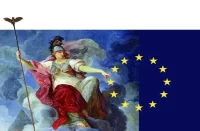How Italy’s first female prime minister is trying to remain human.
We live in an era of postmodernism – irony, deconstruction, nihilism and so forth.
But society is beginning to tire of it, and now there is a turn towards metamodernity, that is, there is a growing desire to return to the ideology of modernity, to enlightened sincerity, to universal values.
The Internet has created an environment in which people have begun to confide personal experiences to a multitude of outsiders, even without being media personalities. Flash mobs with the hashtags #metoo, #faceofdepression, #янебоюсьсказать (I’m not afraid to say) and counting. What is new is that we no longer just share a problem, but accompany it with a personal story.
And in the world of (big-league) politics, such a trend is also beginning to emerge. The trend is towards “new sincerity” – an appeal to values that make us be or at least appear more human. Blogs and social networks have long been a platform for political communication in Italy – one can remember Matteo Renzi, who, when he was Prime Minister, held live broadcasts on Facebook and Twitter with the hashtag #matteorisponde, or Matteo Salvini, who began to detail his personal life on Instagram (his famous “Buongiorno amici”).
 But Italy’s current Prime Minister, Ms Meloni, has outdone everyone. It has been one year since her YouTube column “Giorgia’s Notes” was launched. Back then in 2022 it immediately reverberated among Italians: after several months of premiership, Meloni offers the electorate 20-minute weekly videos in which she, based on notes in her notebook (which she proudly showed but never opened), explains in simple terms what the government has been doing during the past week and why. Never before have attempts to “humanize” a senior official (in this case herself) been so direct and immediate. The very title – “Giorgia’s notes” – screams: I am one of you!
But Italy’s current Prime Minister, Ms Meloni, has outdone everyone. It has been one year since her YouTube column “Giorgia’s Notes” was launched. Back then in 2022 it immediately reverberated among Italians: after several months of premiership, Meloni offers the electorate 20-minute weekly videos in which she, based on notes in her notebook (which she proudly showed but never opened), explains in simple terms what the government has been doing during the past week and why. Never before have attempts to “humanize” a senior official (in this case herself) been so direct and immediate. The very title – “Giorgia’s notes” – screams: I am one of you!
Here is how the Italians themselves reacted: “according to polls, it seems that Meloni is still on her honeymoon with the Italians. Citizens perceive her as one “of our own”, as a good neighbour who became the first female prime minister of Italy”.
Meloni demonstrates a commitment to maximum openness and transparency. How does she do it? Firstly, she comes up trumps: in the very first video, three figures are seen in the background – green, white and red – symbolizing the Italian tricolour, as if to remind Italians (and they tend to forget this from time to time) of their national identity. Secondly, Meloni talks about the work of her cabinet in the most accessible language possible, acting as a senior friend who takes on the task of explaining this or that action of the government. Third, Meloni bypasses any mediation: she selects which questions she will answer and how she will answer them, working in the mode of a press conference, but without journalists. In Italian, this phenomenon has been dubbed “disintermediazione” – “removal of intermediaries”. Her column was immediately quoted, and this format, similar to the live broadcasts of influencers and opinion makers, puts her media presence on a par with such key figures of contemporary Italy as Chiara Ferragni.
The topics covered by Giorgia Meloni are the most pressing: from the unconditional basic income to the 18app payment, from the migration crisis to the rising cost of fuel. Meloni offers her audience not only an explanation of what the Council of Ministers does: she offers her audience the values that will guide her cabinet in dealing with these issues.
Through these videos, Ms. Meloni seeks to strengthen the credibility of her government and to be in constant dialogue with her electorate. It is also an opportunity to reach out to a wider and diverse public, including those who do not receive information through traditional media.
Well, it remains to be seen whether this media move will help to keep not only people’s attention, but also the prime minister’s chair.














Comments